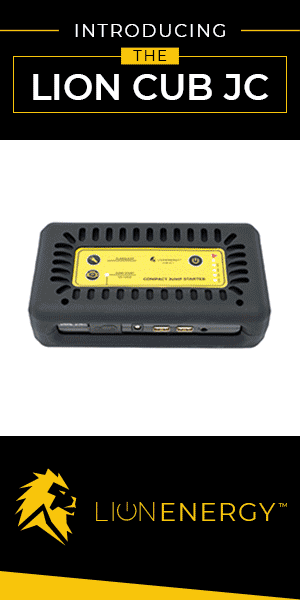Introduction
A solar powered attic fan tax credit can help you save money while making your home more energy-efficient. If you’re considering installing a solar attic fan, you may qualify for a federal tax credit that reimburses you for 30% of the cost. This incentive, part of the Residential Clean Energy Credit, makes it more affordable to reduce attic heat buildup and lower your cooling costs.
But how does this tax credit work, and what do you need to do to claim it? Below, we’ll break down everything you need to know about solar attic fans and how to get the maximum tax benefits.
💡 Why Invest in a Solar Powered Attic Fan?
A solar attic fan harnesses the sun’s energy to remove hot air from your attic, preventing heat buildup that can drive up cooling costs. Without proper attic ventilation, trapped heat can:
🚀 Increase your energy bills by making your AC work harder
🏠 Shorten your roof’s lifespan by overheating shingles
💨 Trap moisture, leading to mold and insulation damage
🌡️ Make upstairs rooms uncomfortably hot
By installing a solar attic fan, you reduce attic temperatures by up to 40°F, lowering cooling costs and extending the life of your roof. Plus, with the solar tax credit, you can recover 30% of the cost when you file your taxes.
📌 What is the Federal Solar Tax Credit?
The Residential Clean Energy Credit (formerly the Investment Tax Credit, ITC) is a federal incentive designed to encourage homeowners to install solar-powered systems.
💰 How Much Can You Save?
From 2022 through 2032, the tax credit covers 30% of the total cost of eligible solar installations, including solar attic fans. This applies to:
✔️ The cost of the solar-powered attic fan
✔️ Installation expenses
✔️ Any electrical work related to the system
💡 Example Calculation:
If you spend $1,500 on a solar attic fan and installation, you can claim a $450 tax credit (30% of $1,500). This effectively lowers your total cost to $1,050.
✅ Who Qualifies for the Solar Powered Attic Fan Tax Credit?
To be eligible for the solar attic fan tax credit, you must meet the following requirements:
✔️ The fan must be solar-powered (electric or hybrid fans do not qualify).
✔️ It must be installed on a residential property you own (not rental properties).
✔️ It must be a new system (not used or refurbished).
✔️ You must have a federal tax liability to claim the credit.
🚫 Not Eligible: Homes used for business purposes more than 20% of the time do not qualify for the full credit.
📝 How to Claim Your Solar Attic Fan Tax Credit
Filing for your solar powered attic fan tax credit is simple:
Step 1: Keep Your Receipts & Documentation
Save all invoices related to purchase, installation, and labor costs.
Step 2: Complete IRS Form 5695
This form is used to claim residential energy credits. Enter the total cost of your solar attic fan installation in Part I of Form 5695.
Step 3: Transfer the Credit to Your Tax Return
The amount from Form 5695 goes on Schedule 3 (Form 1040), line 5 of your federal tax return.
💡 Pro Tip: If your tax credit is higher than your tax liability, the remaining balance can be carried forward to the next tax year!

📅 How Long Will This Tax Credit Be Available?
The federal solar tax credit is currently set at 30% through 2032. However, it drops to 26% in 2033 and 22% in 2034, after which it may expire unless Congress extends it.
If you’re considering installing a solar attic fan, now is the best time to take advantage of maximum savings.
⚠️ Important Limitations to Keep in Mind
Before purchasing a solar attic fan, note the following:
🚫 Not a Rebate – This tax credit reduces your tax liability; it’s not a direct refund.
🏡 Primary Residences Only – Rental properties do not qualify.
💰 Cannot Exceed Tax Liability – You can roll over unused credits, but you won’t get cash back.
🌞 Are Solar Attic Fans Worth the Investment?
If you live in a hot climate, a solar attic fan can significantly lower your cooling costs and increase your home’s energy efficiency. With the 30% federal tax credit, it’s more affordable than ever to make your home cooler, greener, and more cost-efficient.
Pros of Solar Attic Fans
✔️ Lowers cooling costs by up to 30%
✔️ Extends roof lifespan by reducing heat buildup
✔️ Operates for free with solar power
✔️ Reduces moisture buildup in the attic
✔️ Eligible for the 30% federal tax credit
If you’re looking for a cost-effective, energy-efficient way to improve home ventilation, a solar attic fan is a great investment—especially with the tax credit savings available now.
FAQs
1️⃣ What is the solar powered attic fan tax credit?
The solar powered attic fan tax credit is part of the Residential Clean Energy Credit, which allows homeowners to deduct 30% of the total cost of a qualifying solar attic fan system (including installation) from their federal taxes.
2️⃣ How much can I save with the tax credit?
The tax credit covers 30% of your total purchase and installation costs.
💡 Example Calculation:
- If you spend $1,500 on a solar attic fan and installation, you can claim a $450 tax credit, reducing your cost to $1,050.
3️⃣ Who qualifies for the solar attic fan tax credit?
You qualify if:
✔️ The fan is 100% solar-powered (electric attic fans do NOT qualify).
✔️ It’s installed on a primary residence you own in the U.S.
✔️ It’s a new system (not used or refurbished).
✔️ You owe federal taxes (the credit reduces what you owe, but won’t give you a refund).
4️⃣ How do I claim the tax credit?
Follow these steps:
1️⃣ Keep all receipts (purchase, installation, and labor costs).
2️⃣ Complete IRS Form 5695 (Residential Energy Credits).
3️⃣ Enter the credit on your federal tax return (Form 1040, Schedule 3).
💡 Pro Tip: If your tax credit is larger than what you owe, you can carry forward the unused portion to future tax years.
5️⃣ Is the solar attic fan tax credit a rebate?
🚫 No, this is not a rebate. It’s a tax credit, which means it reduces the amount of federal income tax you owe. If you don’t owe taxes, you won’t get a cash refund—but you can carry over unused credits to the next tax year.
6️⃣ Does the tax credit cover installation costs?
✅ Yes! The 30% credit applies to both the cost of the fan and installation expenses, including any electrical work required.
7️⃣ Can I claim the tax credit for a rental property?
🚫 No, rental properties do not qualify. However, if you live in part of the home and rent out the rest, you may qualify for a partial credit.
8️⃣ What happens if I install multiple solar attic fans?
You can claim the 30% tax credit on all qualifying solar attic fans installed on your primary residence, as long as they meet eligibility requirements.
9️⃣ Will the tax credit expire?
The 30% solar tax credit is available until 2032. After that:
- 2033: The credit drops to 26%
- 2034: The credit drops to 22%
- 2035: The credit is scheduled to expire
💡 If you’re considering installing a solar attic fan, it’s best to do it before 2032 to maximize savings!
🔟 Can I claim this tax credit if I already claimed it in previous years?
✅ Yes! If you install a new solar-powered attic fan in a different tax year, you can claim the credit again, as long as it’s for a new installation on your primary residence.

📢 Final Thoughts
A solar powered attic fan is a great investment for reducing home cooling costs, and the 30% tax credit makes it even more affordable. By following the steps outlined above, you can maximize your savings while improving your home’s energy efficiency.
Disclosure: As an Amazon Associate, I earn from qualifying purchases.


